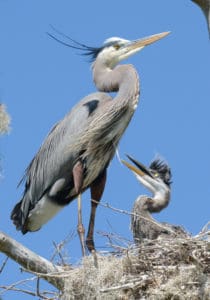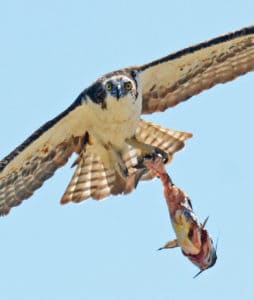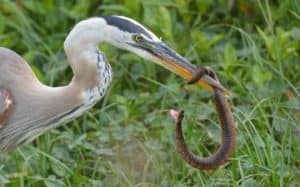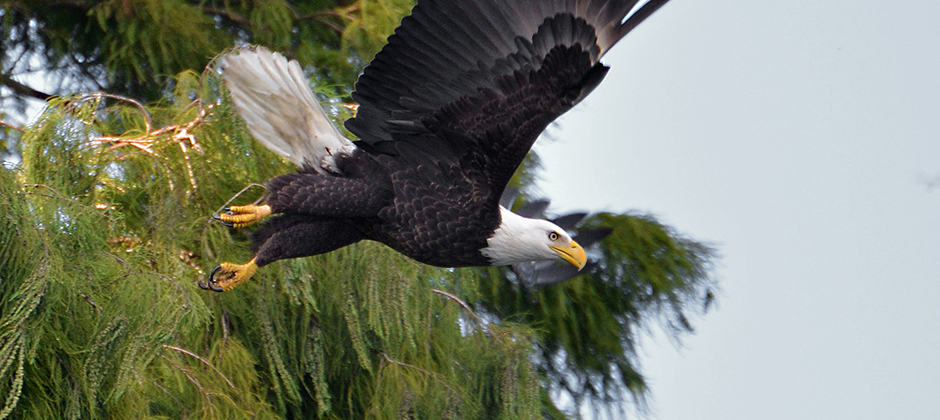Share this article
Bald eagle recovery hinders osprey, heron populations
Fast-tracked bald eagle recovery may have taken a bite out of osprey and heron populations in Voyageurs National Park.
Populations of fish-eating birds like ospreys (Pandion haliaetus), bald eagles (Haliaeetus leucocephalus), and great blue herons (Ardea Herodias) had dropped to low levels in northern Minnesota’s Voyageurs National Park in the early half of the 20th century due to persecution and use of pesticides that thinned their egg shells.

The great blue heron population in the park began to recover in the 1980s. ©Jeremy Cohen
But efforts to ban some pesticides and hunting led to a consistent natural recovery of the herons and osprey in the late 1980s.
“Everyone was patting themselves on the back thinking that things were going really well for those species,” said Jennyffer Cruz, a postdoctoral researcher in ecology at the University of Wisconsin-Madison and lead author of the study recently published in the Journal of Animal Ecology.
But bald eagles recovered slower, leading wildlife managers to implement additional steps like fencing off bald eagle roosts during nesting so park visitors wouldn’t disturb the birds. Breeding improved for the eagles, and as they began to recover, herons and osprey numbers began to drop again.
Cruz and her co-authors wanted to find out what was happening. They weren’t sure whether the osprey and herons were being affected by eagle predation, or whether the prey resources and nesting habitat quality of the osprey and herons was limited and caused a drop in their numbers.
They examined data on fish-eating bird numbers from 1973, when monitoring started, through 2012. They found that osprey numbers had reached a peak of about 20 breeding pairs in the 1980s while great blue herons were close to 300 breeding pairs at this time.

Osprey are currently down to less than four breeding pairs in Voyageurs. ©Jeremy Cohen
Cruz said that they could find no correlation of bottom-up problems that might have affected the change in population numbers of osprey and great blue herons, other than that herons choose to locate their colonies in areas with more fish.
But they did find multiple top-down effects from eagles, which reduced nest re-use and nesting success for osprey, and the number and size of heron colonies.
“The strongest most consistent predictors that we found associated with the decline in osprey and great blue herons was abundance of bald eagles in the park at breeding season,” Cruz said.
Osprey numbers fell to a recent low of four breeding pairs in the park while the herons have come down to about 41 nests.

Researchers said that future conservation efforts should get away from focusing on single species recovery. ©Jeremy Cohen
“We’re definitely seeing a strong decline in both of those species in the park,” Cruz said.
In a natural system, eagles compete with and prey on heron and osprey nests, she said, but if researchers hadn’t focused only on eagle recovery, the other two species might have continued to recover in tandem with the larger raptors. In the future, Cruz said, wildlife managers should look more at whole ecosystem recovery.
“For us it’s more of a wakeup call to move away from single species management,” she said.
Header Image: Bald eagles have seen their populations recover in recent decades in Voyageurs National Park. ©Jeremy Cohen








